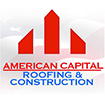High winds can be a powerful force of nature, and when they strike, they often bring with them significant risks to homes. One of the most vulnerable parts of a structure during a windstorm is the roof.
1. Shingles and Roofing Materials Can Be Uplifted
One of the most common forms of roof damage caused by high winds is the lifting of shingles or other roofing materials. When winds reach a certain speed, they can get underneath the shingles, causing them to lift or even tear off entirely. This leaves the roof vulnerable to water intrusion and further damage, especially if the storm brings rain. Over time, the loss of shingles can compromise the roof’s ability to protect the interior of your home.
2. Roof Decking Can Be Exposed
As shingles are ripped off by high winds, the underlying roof decking can be exposed to the elements. This is a particularly serious concern during heavy rain or snow, as the exposed decking can absorb moisture, leading to wood rot, mold growth, or structural weakness. If the roof decking becomes compromised, it can lead to significant structural damage, often requiring a complete roof replacement.
3. Damage to Flashing and Seals
Flashing is the metal material used around roof joints, chimneys, vents, and skylights to prevent water infiltration. High winds can cause flashing to loosen or break, creating gaps where water can enter. If water gets underneath the roof surface, it can damage the underlying materials and cause long-term issues like mold, mildew, and wood rot.
4. Trees and Debris Can Strike the Roof
In addition to the effects of wind alone, high winds can also bring down tree branches, debris, or even entire trees. These objects can fall onto your roof, causing punctures, cracks, or even structural damage. The impact can be severe, especially if the windstorm is accompanied by heavy rain or hail.
5. Impact on Roof Ventilation
High winds can also disrupt the ventilation systems on your roof, such as vents and ridge caps. These are important for maintaining airflow and regulating temperature in the attic. If they become damaged or dislodged, your roof may suffer from poor ventilation, leading to increased moisture buildup and the risk of mold growth.
